It is the method I use to coach hundreds of golfers. It is simple, effective, and includes some great practice games.
Chipping is the ultimate goal.
Chipping involves carrying the ball over the fairway, rough or green, where it has ended. The ball should bounce, roll, and end up in the hole.

To chip well, you must have three basic skills:
- Consistent strikes
- Consistent ball speed
- Consistent ball trajectory/launch
These three attributes will make you a great player on the greens if you can create a chipping strategy that creates them. It will allow you to combine the chipping techniques of different clubs to create different types and styles of chip shots.
When chipping, critical thought.
When chipping, the most significant error made by golfers is to try and lift the ball higher in the air. It causes a flicky action with very little room for error. It can lead to the golf ball hitting the ground before the ball and thinning through the green.
Instead of trying to lift the ball, brush the grass underneath the ball and let the loft of the golf club do the rest. Although it may sound counterintuitive, if the golf club is swinging through at a level or slightly lower, you have a wide window of contact between the club head and the ball.
You have two options when lifting the ball: hitting the ground behind it or hitting it halfway up (red arrow).
It is the same idea you should remember for every chipshot. You can hit chip shots higher by choosing a loftier club or opening the club face. But for every print, focus on sweeping the grass under the ball and not just hitting it.
How to Chip
You now have the fundamental idea of consistent chipping. Let’s dive into the technical aspects that make significant chipping.
Chipping setup
Chipping is all about how you stand. If you spend some time getting to know your setup, you will find it very easy.
This video will show you how to change your golfing stance into a chipping position.
- Move closer to the ball by lowering your golf grip. It will give you greater control over your chip shots.
- Move your feet closer together. They don’t need to be as close as mine, but this will help your body rotate as you chip.
- Approximately 60% of your weight should be carried through the front foot. It allows you to hit your chip shots more efficiently – we’ll discuss this further below.
Chipping swing
Once you’ve mastered this setup, copy the video below to learn how to golf chip.
You only need to make a slight turn with your body, and the ball will rise into the air. Look at the video again to see how your wrists hold firm as you swing the ball into the finish.
Your chipping skills will improve if your body can turn back and forth and your hands and arms are stable. This technique is the same regardless of which club you chip with.
Chipping swing thought
We have already discussed that most beginners and many club players try to lift the ball in the air. It is a mistake that can lead to many miss-hit shots. Instead, it would help if you aimed to hit slightly on the golf ball and then brush the grass underneath the ball while the club moves towards your goal.
Swinging the club towards your target is a great idea. Keep the club head down.
It helps keep the club moving through impact, encourages you to turn your body to the target, and minimizes flickering of your wrists. These are all traits of great chippers.
How to control distance in chip shots
Once you are familiar with the basics, controlling distance is easy.
- A short swing back and forth is enough for faster chips.
- Longer chips require a longer swing back and through.
Instead of trying to hit it harder, use the length of your chipping swing.
Is it a good idea to have a backswing and a through swing of the same length?
Yes, it is possible. However, if you have a positive swing-through impact, you will find that your follow-through is slightly longer than the backswing. It is ideal.
How to practice chipping
Walk back 10 yards from the hole with five balls. You can chip each ball with your nine iron and see how many shots are within 1-club length (3 Pts) or 2-club lengths (1 Pt).
Move back to the 15-yard line and continue the game.
Moving between these distances will help you to learn how to chip. You can also use the length of your chipping swing as a control tool to reduce distances. This article contains more golf-chipping games.
Which club is the best for chipping?
I recommend you practice all options (6-iron to lob wedge) and then pick the club you are most comfortable with while playing. We’ll give you some pointers to help you choose the right club.
Chipping with a 7, 8, or 9-iron
These irons are great for chip shots. They will fly lower and roll more than they will through the air. These irons are best used when there is a lot of green between your hole and you.
Chipping with an SW, PW, or Lob wedge
Your wedges can fly higher and travel further than chips. These clubs are best used when there is little green available or if you have a problem.
A wedge is also an option if your ball is in the rough grass. You can make a more steep swing into the ball with the shorter shaft. The extra loft will also help the ball rise into the air.
How to make it stop and chip
Two factors will cause your chip shots to stop quickly: a good angle of the golf club and a backspin. While most golfers want to increase their backspin, it is much easier to improve the trajectory of your chips shots and get them to stop quickly.
Why do I shank chip shots?
Shank occurs when the ball strikes the hosel rather than the face of the club. It is common to have too much weight on your heels when you set up. Your weight will shift towards the center of your feet during your swing, which causes the club head to go further out. It can cause you to hit your hosel instead of the club face.
It will prevent you from falling over. If you are struggling, you can move your weight toward your toes. It is the only way that you will contact the hosel if you fall!
Summary of how to chip
After learning the basics of chipping, why not read our advanced tips guide or this article on how you hit a bunker shot? You can also sign up for the Golf Insider weekly email.



